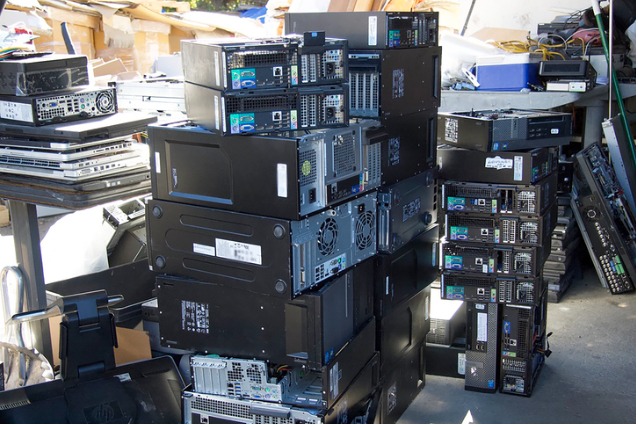The management of e-waste is becoming ever more important as our reliance on mobility devices increases and new technologies enter the market.
Ingram Micro Lifecycle enables a circular economy for our customers, which reduces their e-waste contributions.
We provide lifecycle extension solutions that ensure electronic devices have an efficient use for longer.
In this article, we briefly introduce e-waste, explaining what it is and its impacts.
The definition of e-waste
E-waste, short for electronic waste, is an object that houses a battery or has a plug that the owner no longer has a use for. The item could be in working or non-working condition, but the owner has the intention of disposing of it in a way that contributes to landfill.
These include:
- white goods
- gaming devices
- wearables
- smartphones
- laptops
- monitors
- and more
The dangers of e-waste
This electronic waste is toxic or hazardous to the environment if left to decay and break down in landfills. Risks occur from improper handling.
Not all countries legislate to protect against the impacts of this. Those who don’t may have had e-waste historically shipped to them from other countries illegally.
In these countries, e-waste is a form of income, albeit via dangerous methods. The products are a source of precious metals, including copper, gold, and silver. To acquire these materials, e-waste may be subject to open-air burning and acid baths. These processes release harmful substances such as lead, mercury, arsenic, and brominated flame retardants (BFRs).
Sustained human contact with these can cause neurological damage and cancer, and releases CO2 into the atmosphere. The ground beneath can also become contaminated.
By 2030, 74 million tonnes of e-waste will have been produced globally. That’s equivalent to the weight of over 7000 Eiffel Towers. This leaves a footprint.
Our reliance on technology is increasing and uses for it continue to diversify. Consider that relatively recently we’ve seen an increase in smart home devices, video doorbells, and VR headsets. If not disposed of correctly, these will go into landfill and contribute to the e-waste problem.
As the make-up of the e-waste changes, the processes to efficiently manage it must also change. Your business needs to ensure that its e-waste management adapts to support the ebb and flow of electronics that it possesses.
What can you do to minimize your e-waste impacts?
Through the services of Ingram Micro Lifecycle, you can make a change from a linear economy to a circular one. Our state-of-the-art services ensure that IT and mobility devices, gadgets, and small domestic appliances can be re-used beyond their standard expected lifecycle.
Within the top eight trends linked to a circular economy, our services within IT asset disposition, reverse logistics, and asset management enable sustainability within three of these:
- Reuse
- Remanufacture
- Repair
Get in touch with us today to discuss how our solutions can be packaged to suit your needs.
Other recommended reading:
- How smartphone screen repair promotes sustainability & circularity
- 8 ways a tech reverse logistics partner enables a circular economy
- 5 ways a technology circular economy boosts your sustainability goals
- Sustainable changes to reduce e-waste
- Enabling a circular economy for our customers
- 10 things to know before getting rid of your device











.jpeg?width=450&height=250&name=used%20computer%20hardware%20in%20garbage%20(1).jpeg)
.jpg?width=450&height=250&name=used%20computer%20hardware%20in%20garbage%20(1).jpg)
